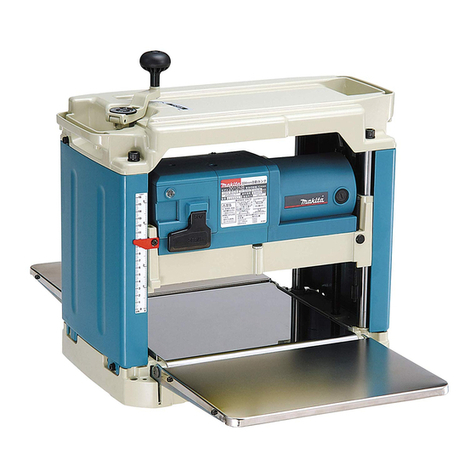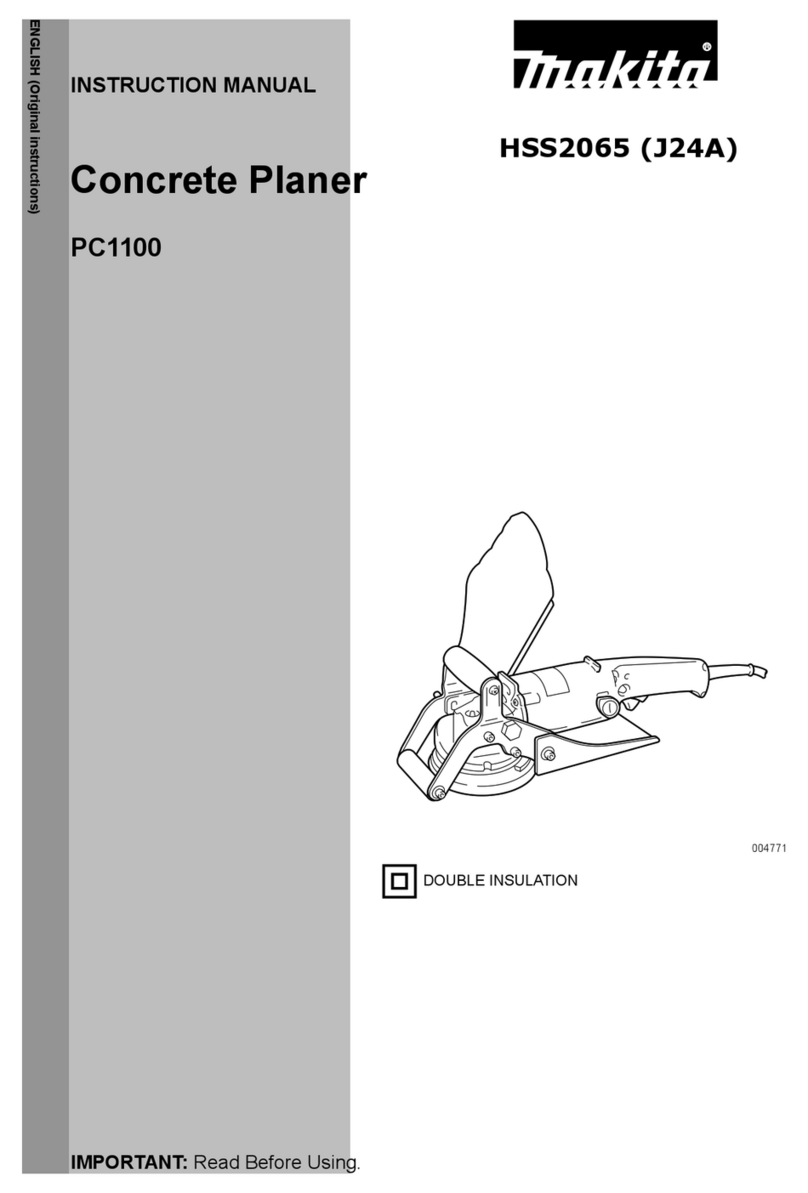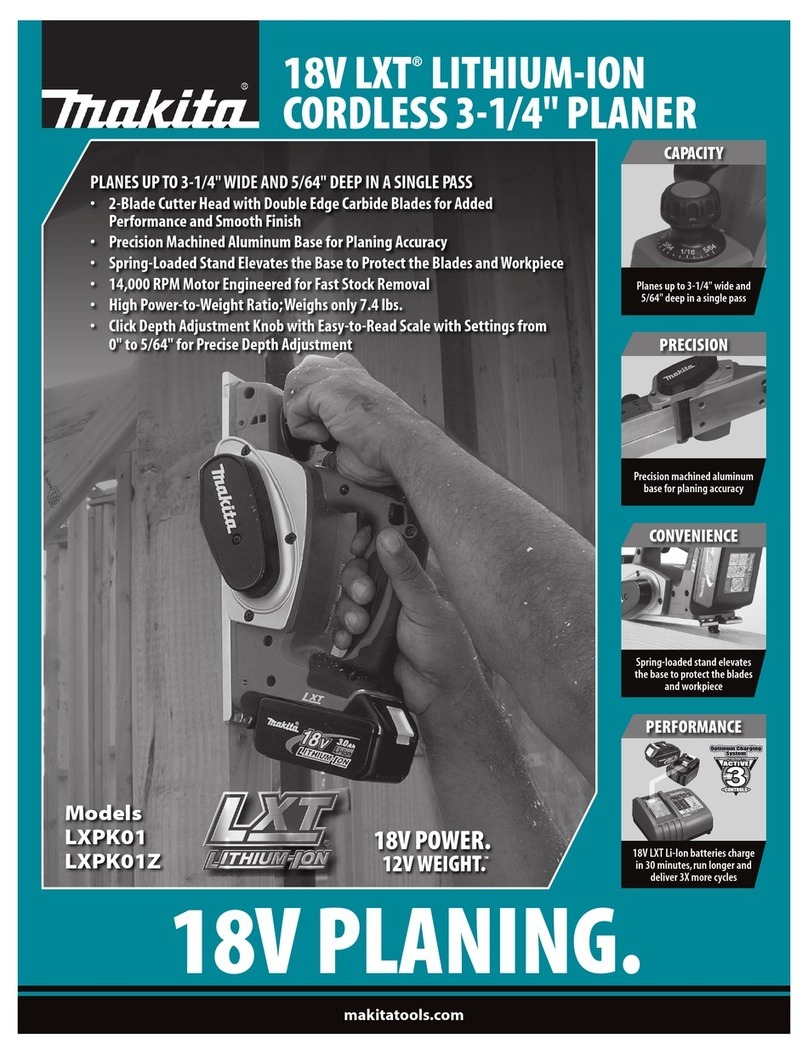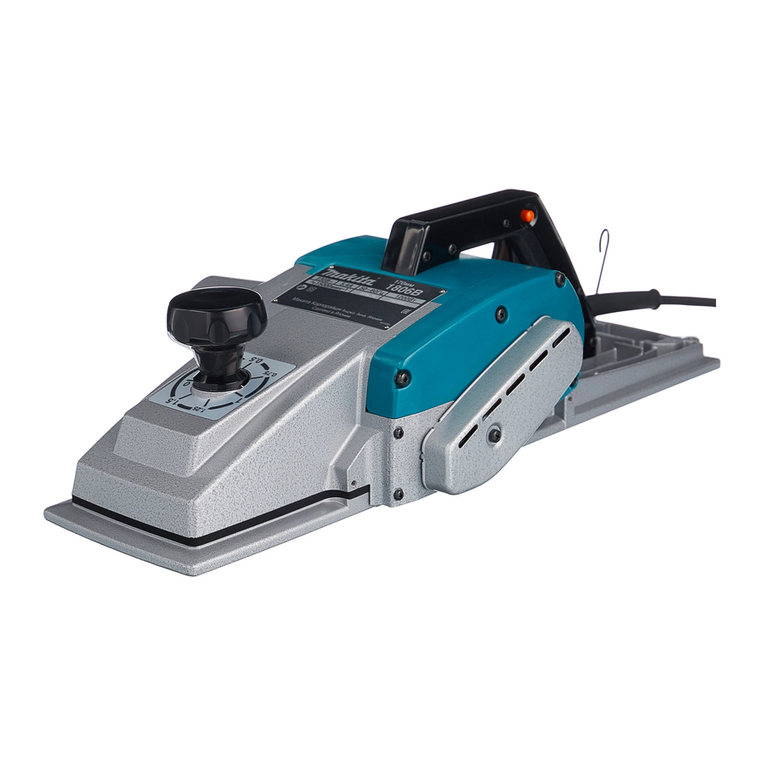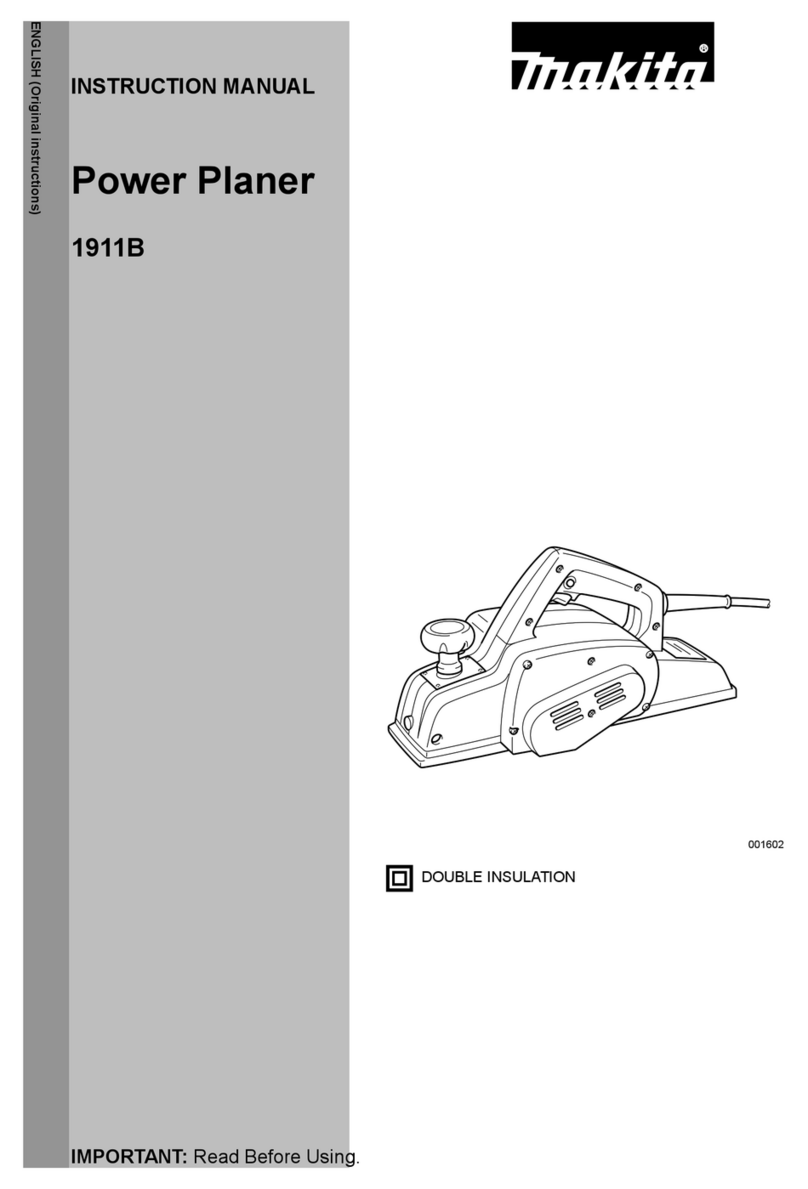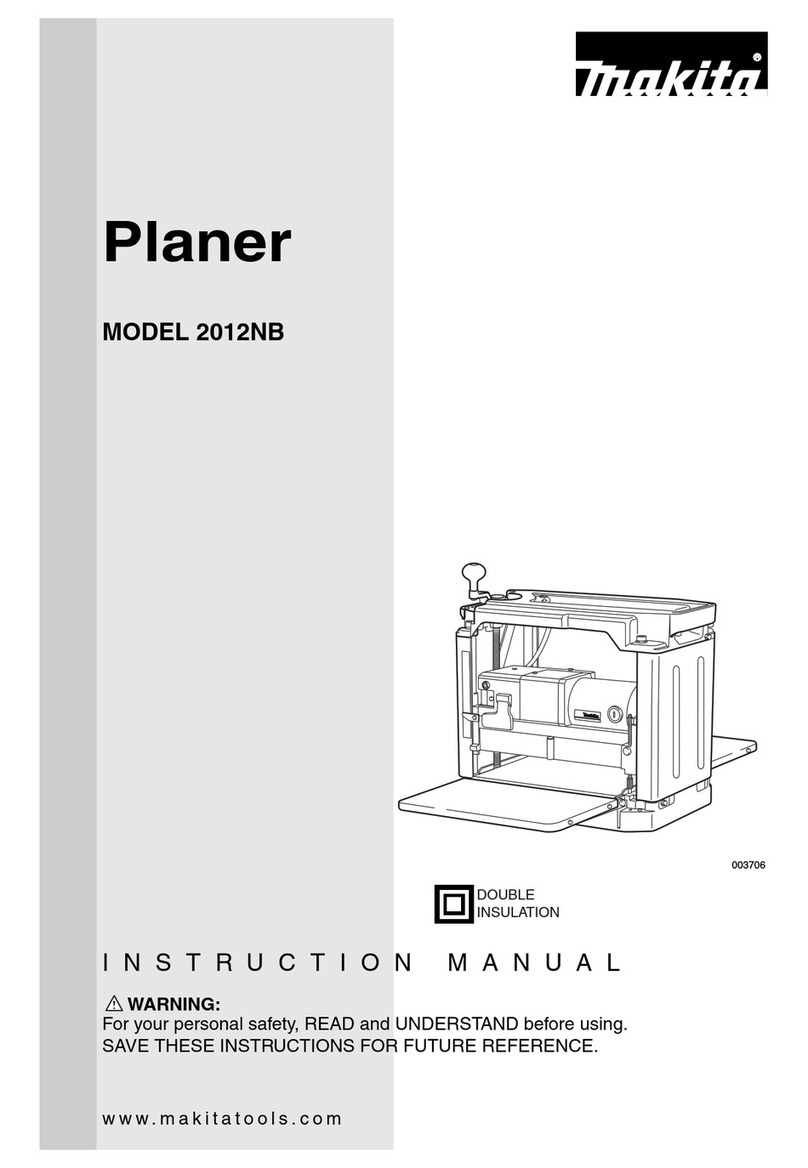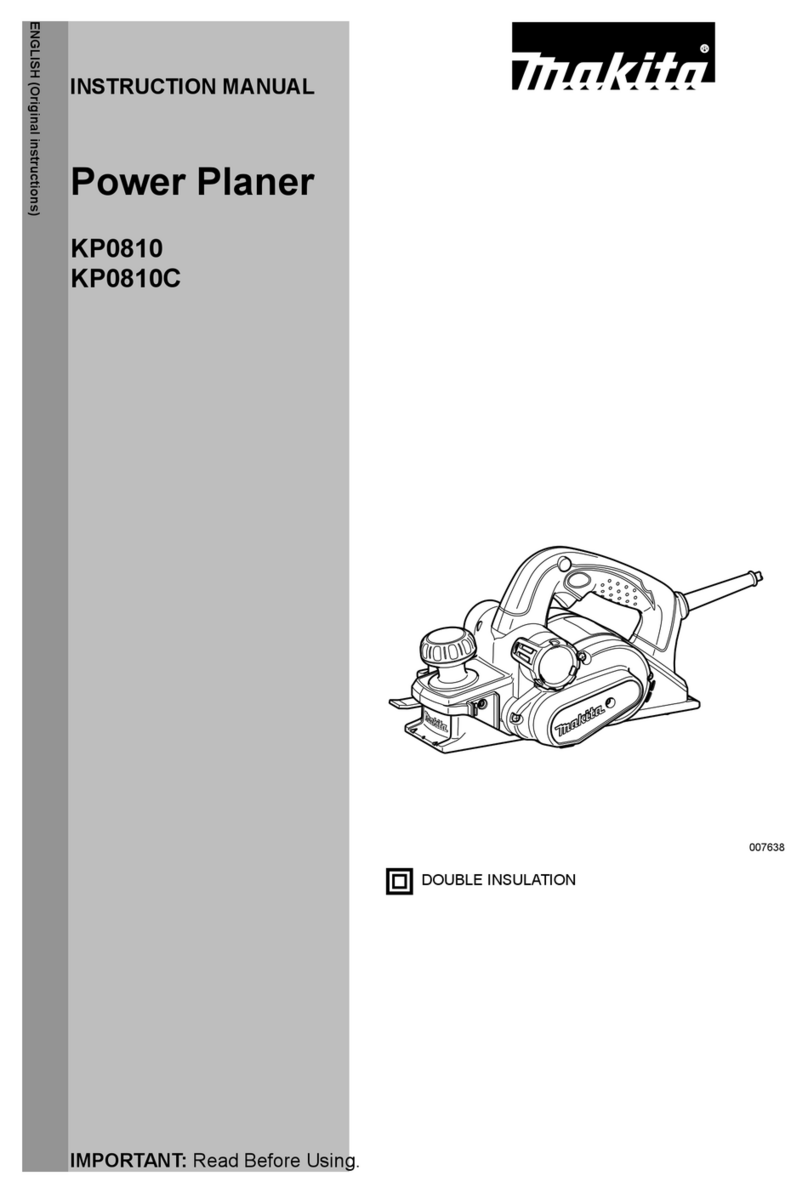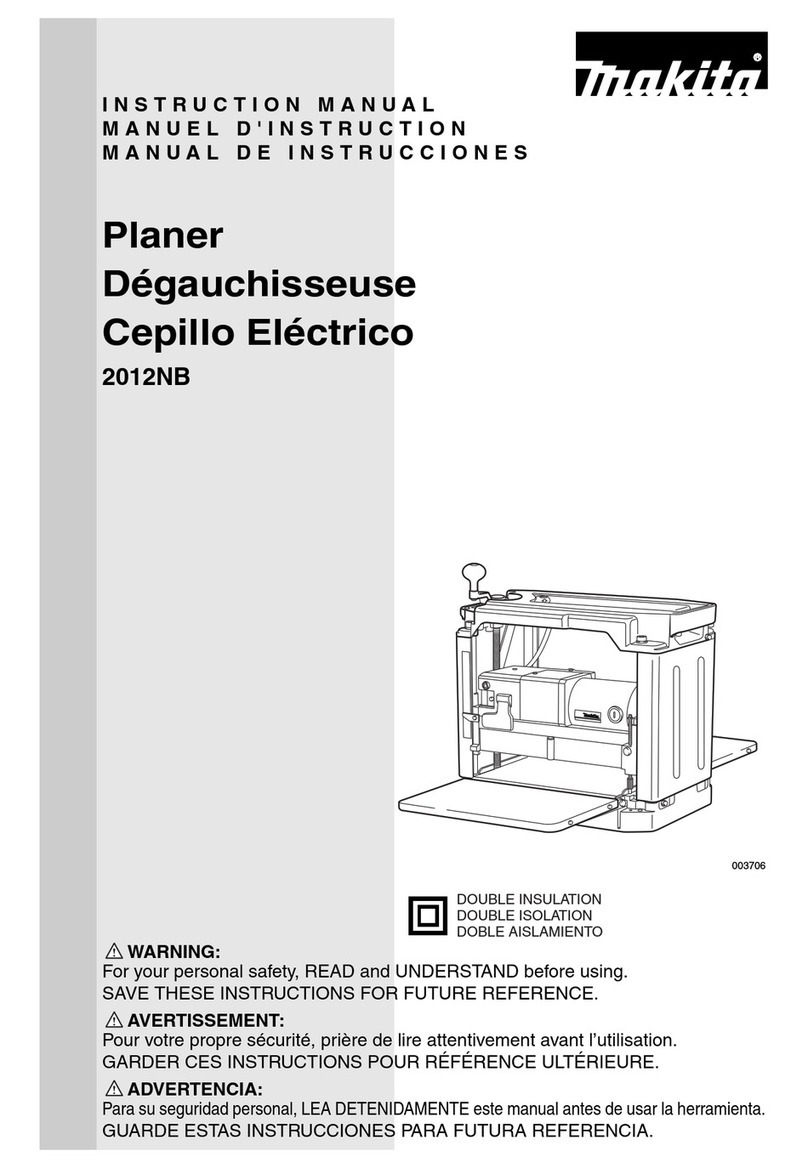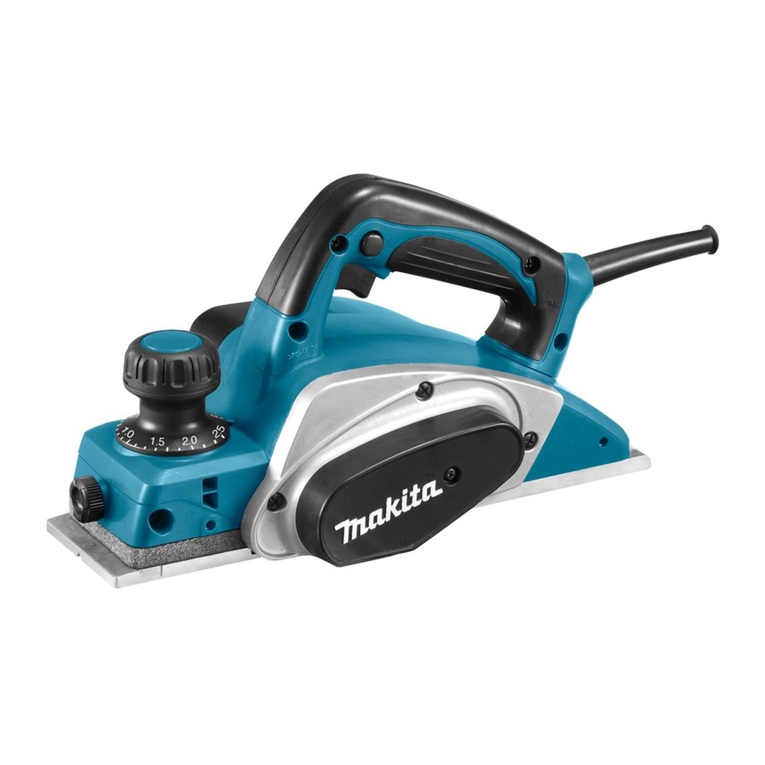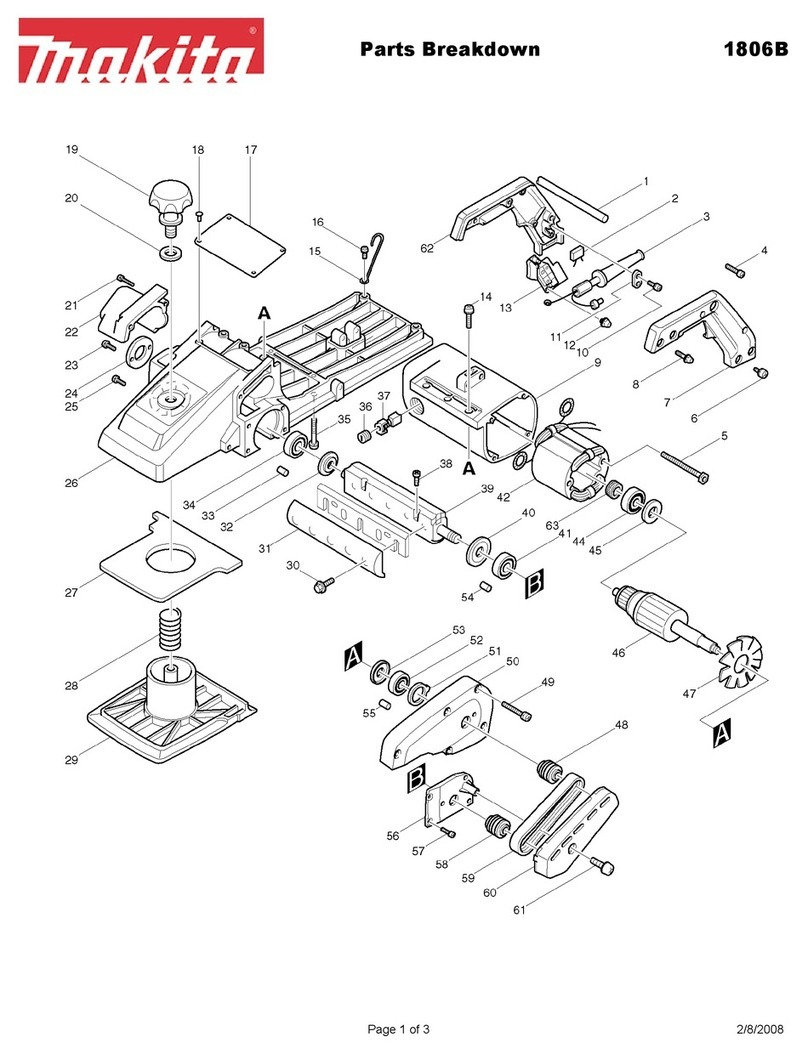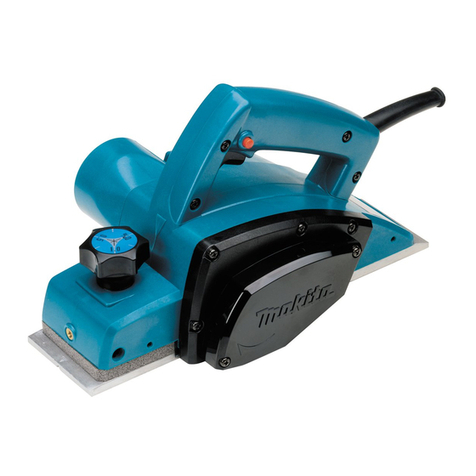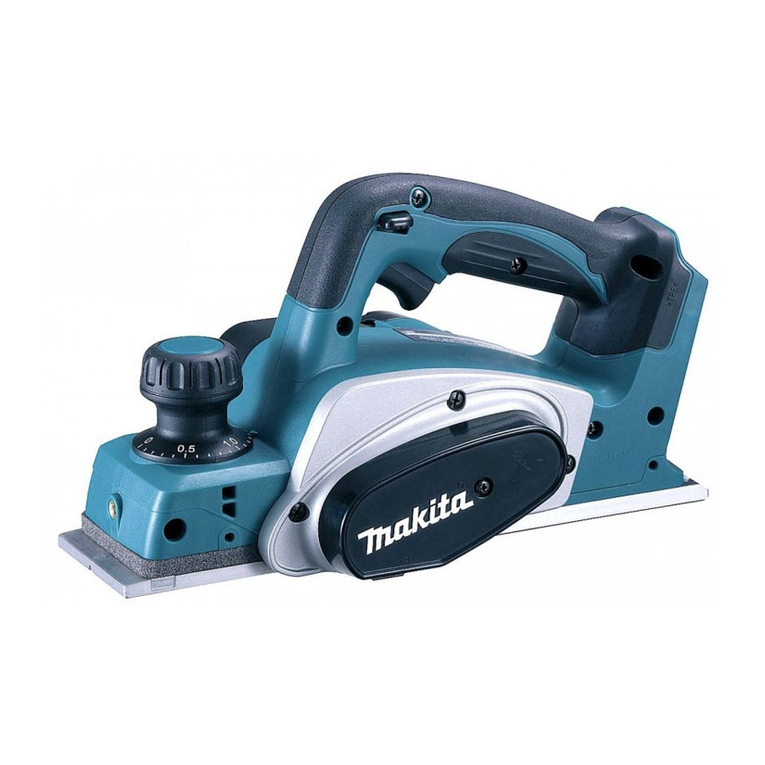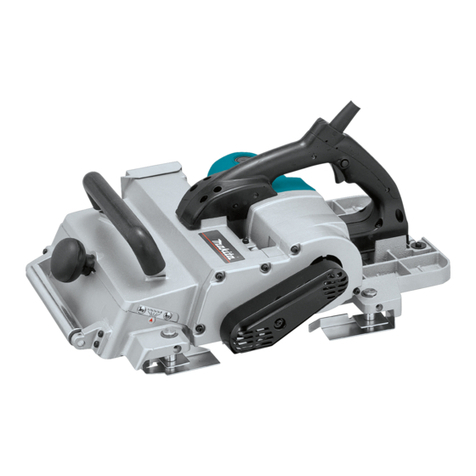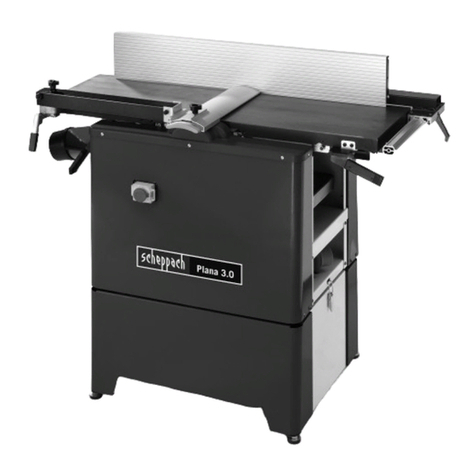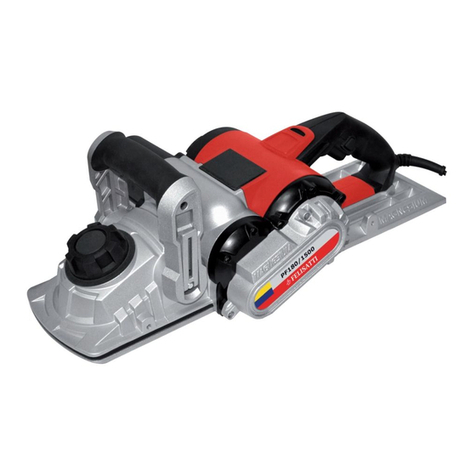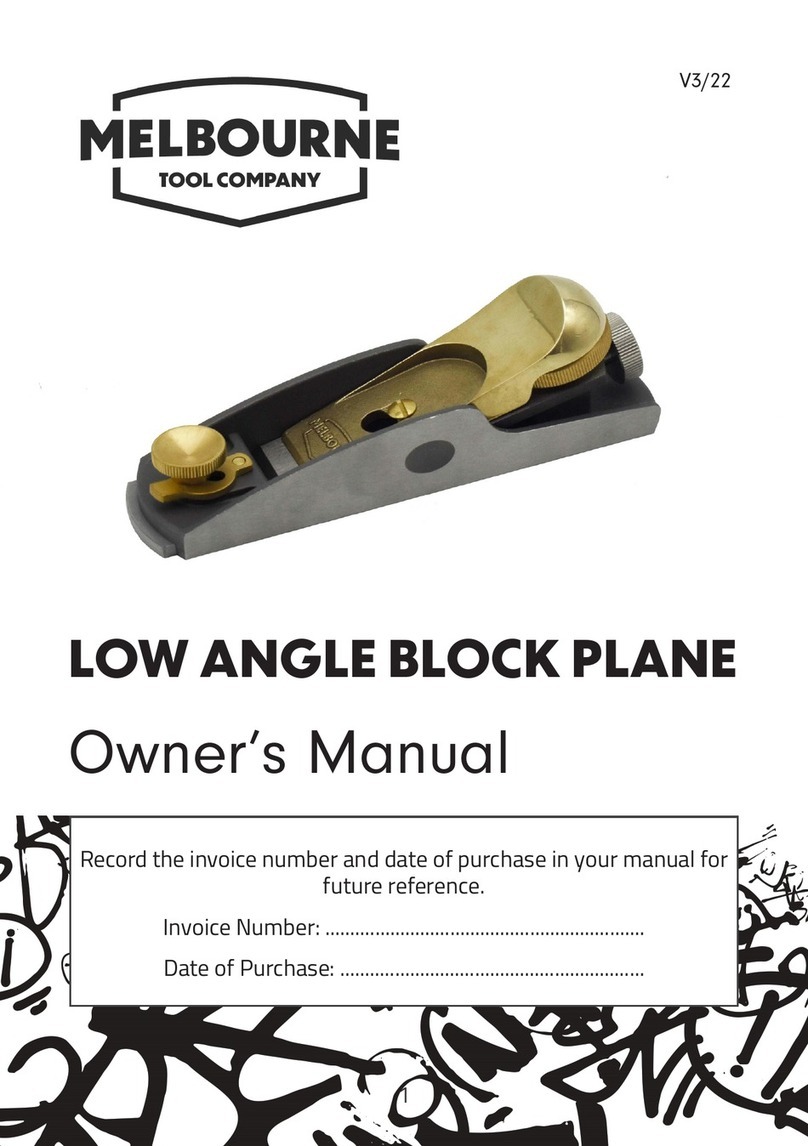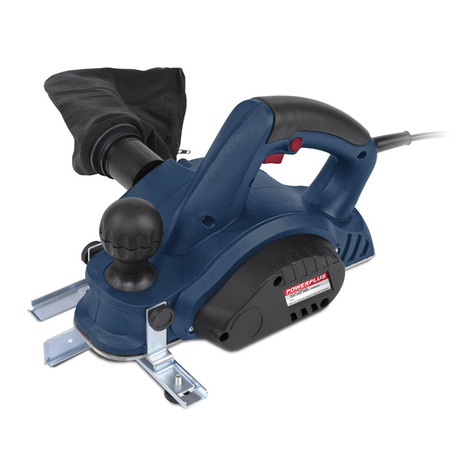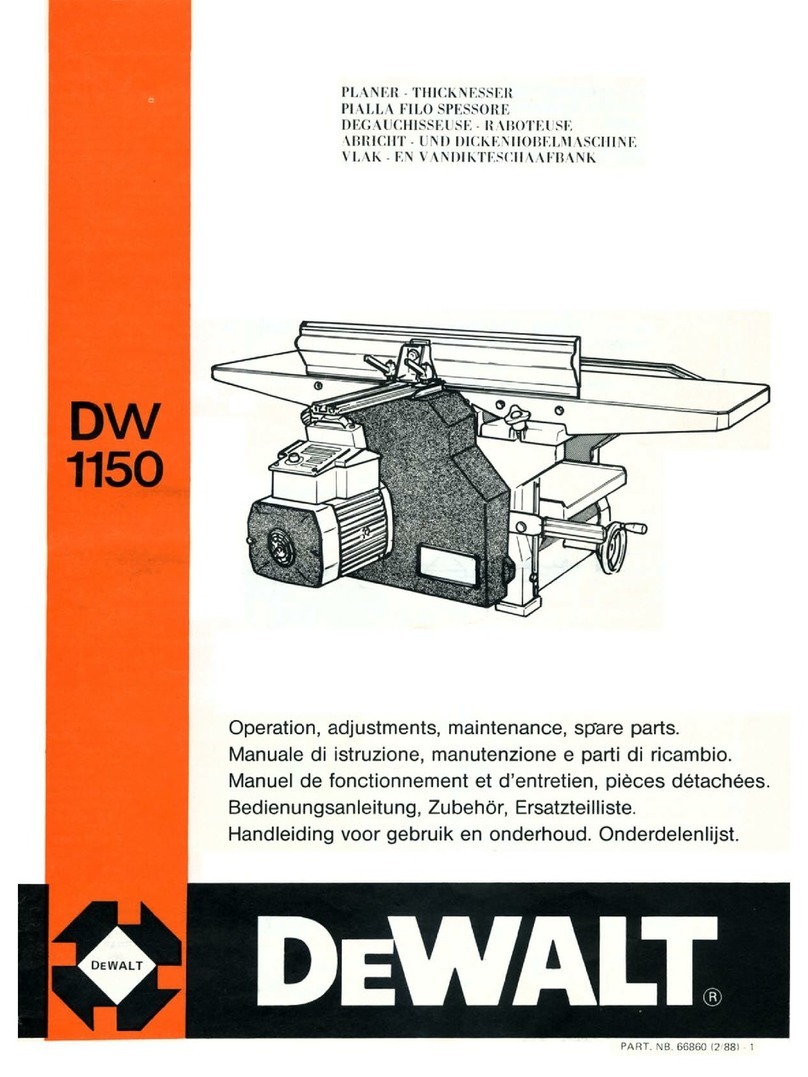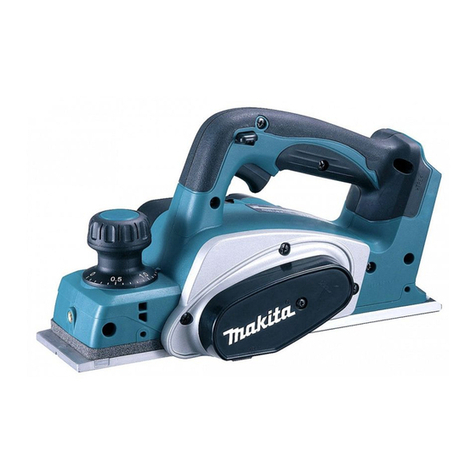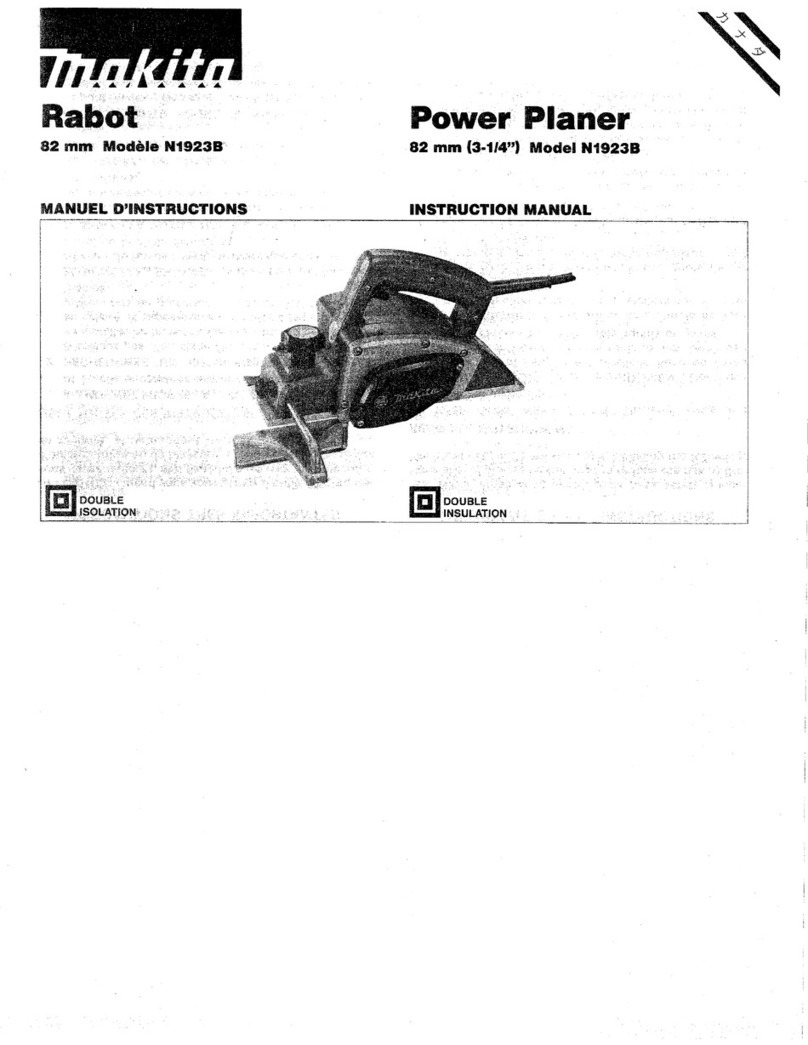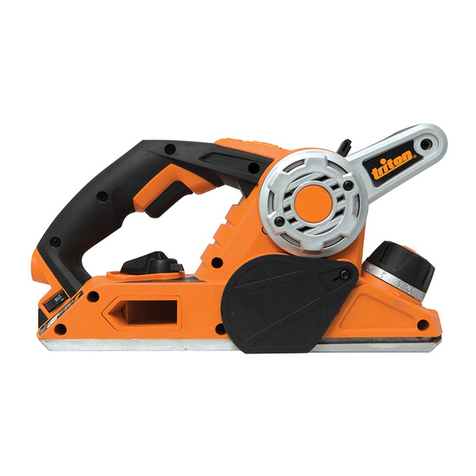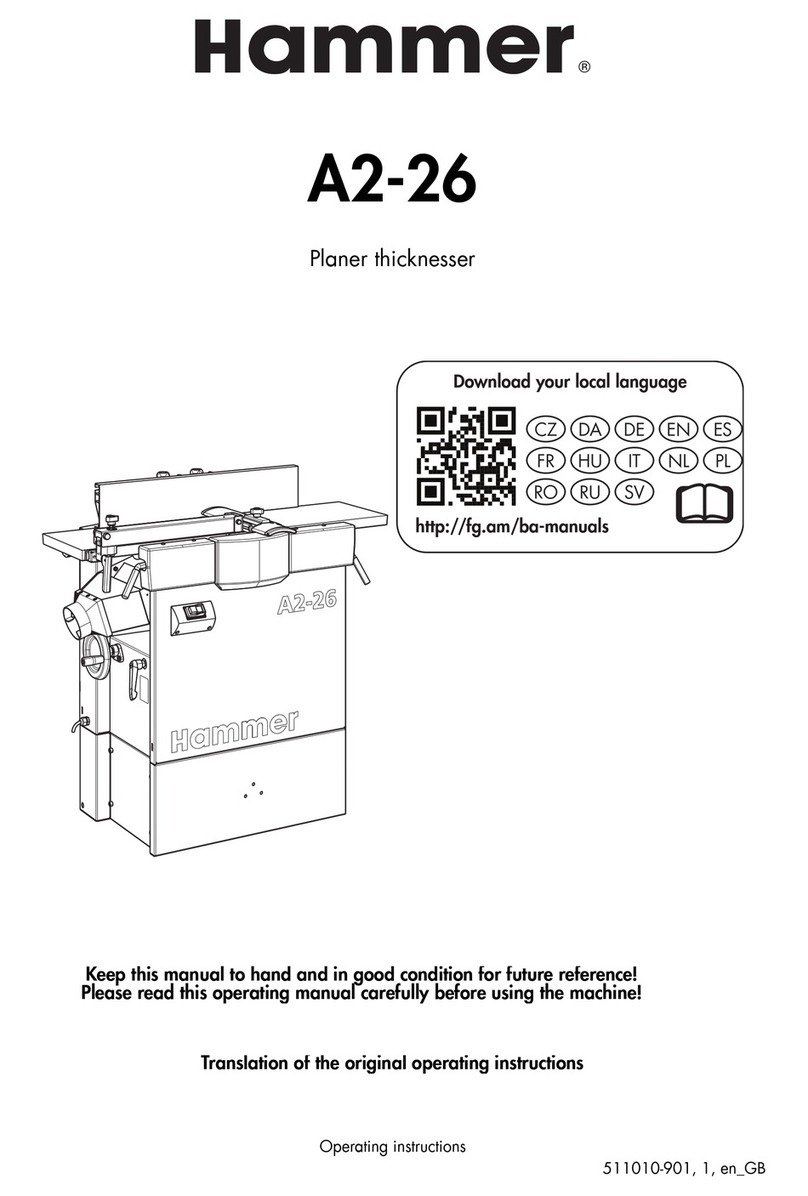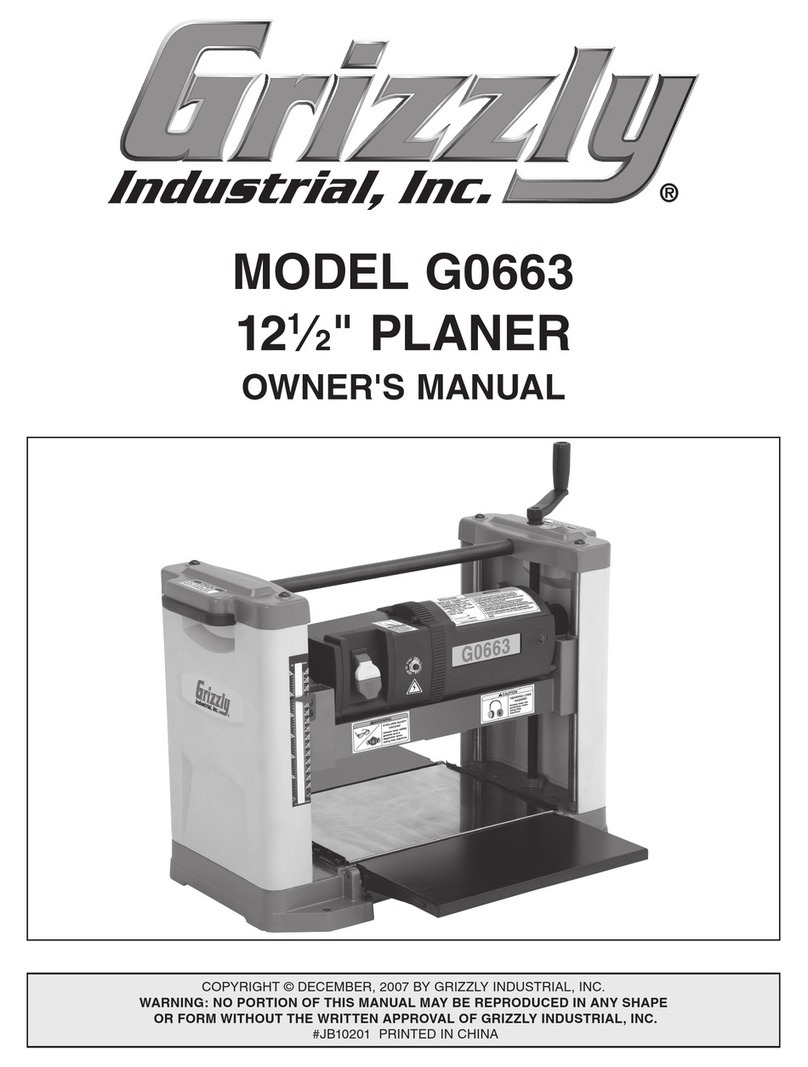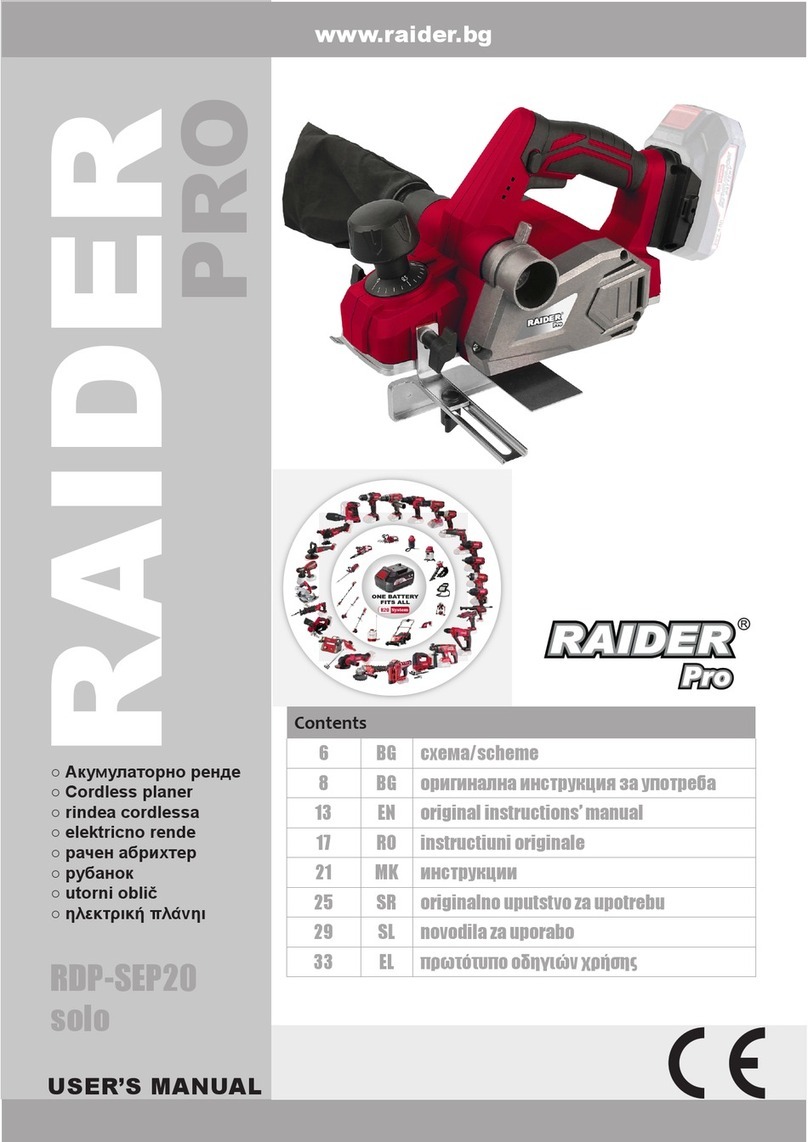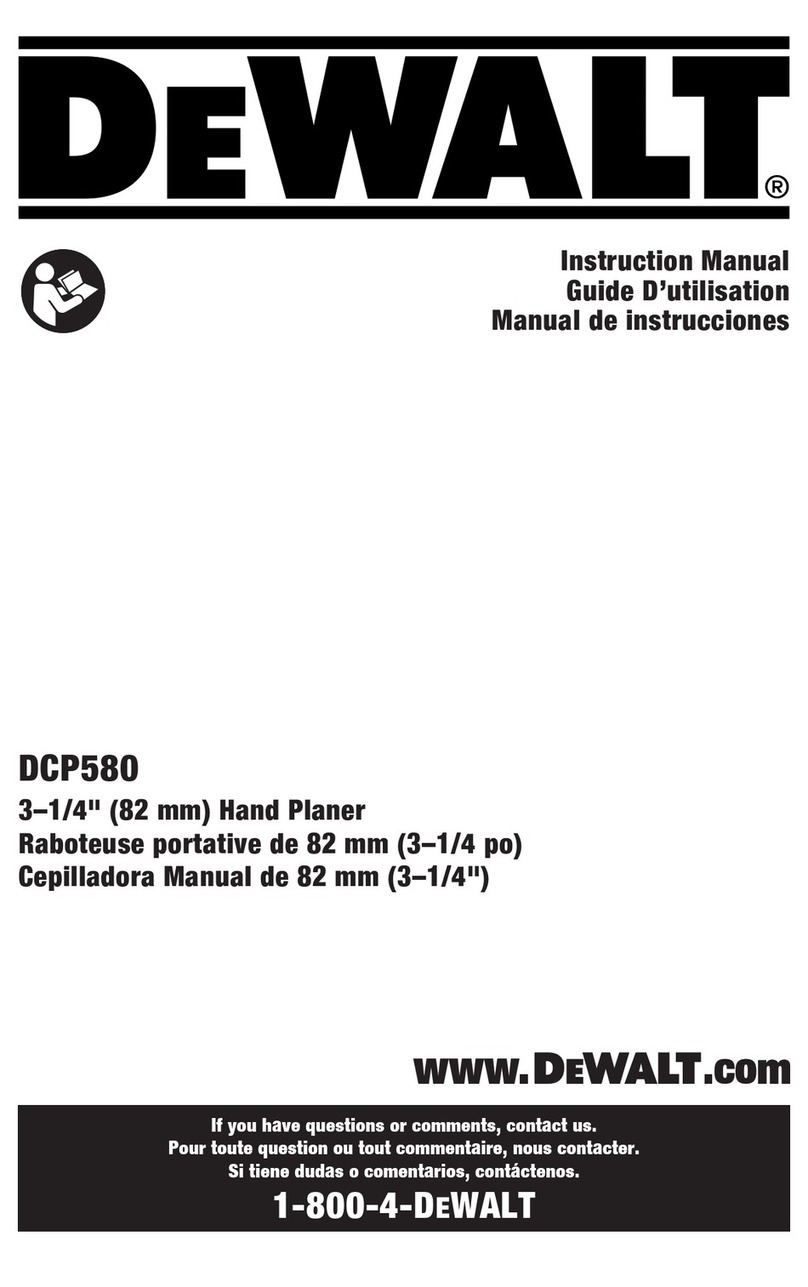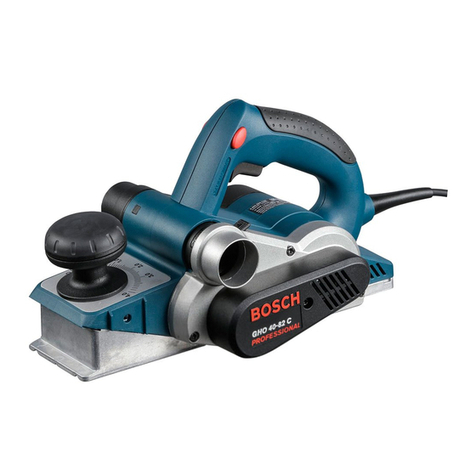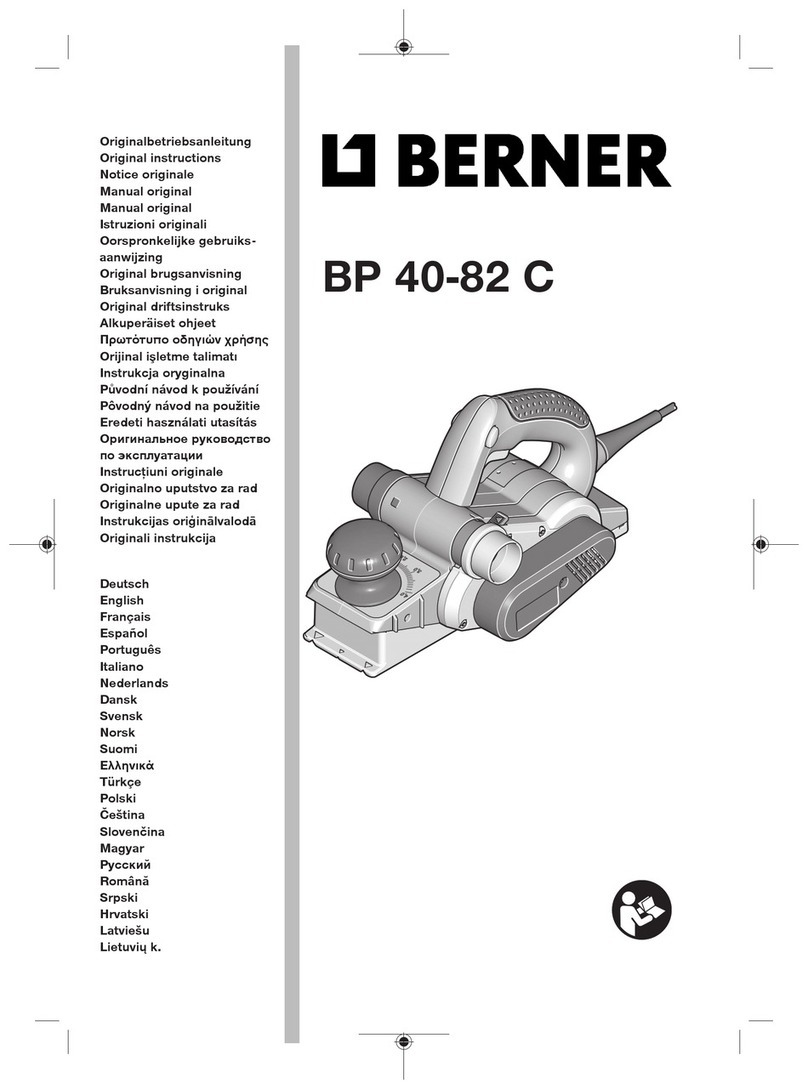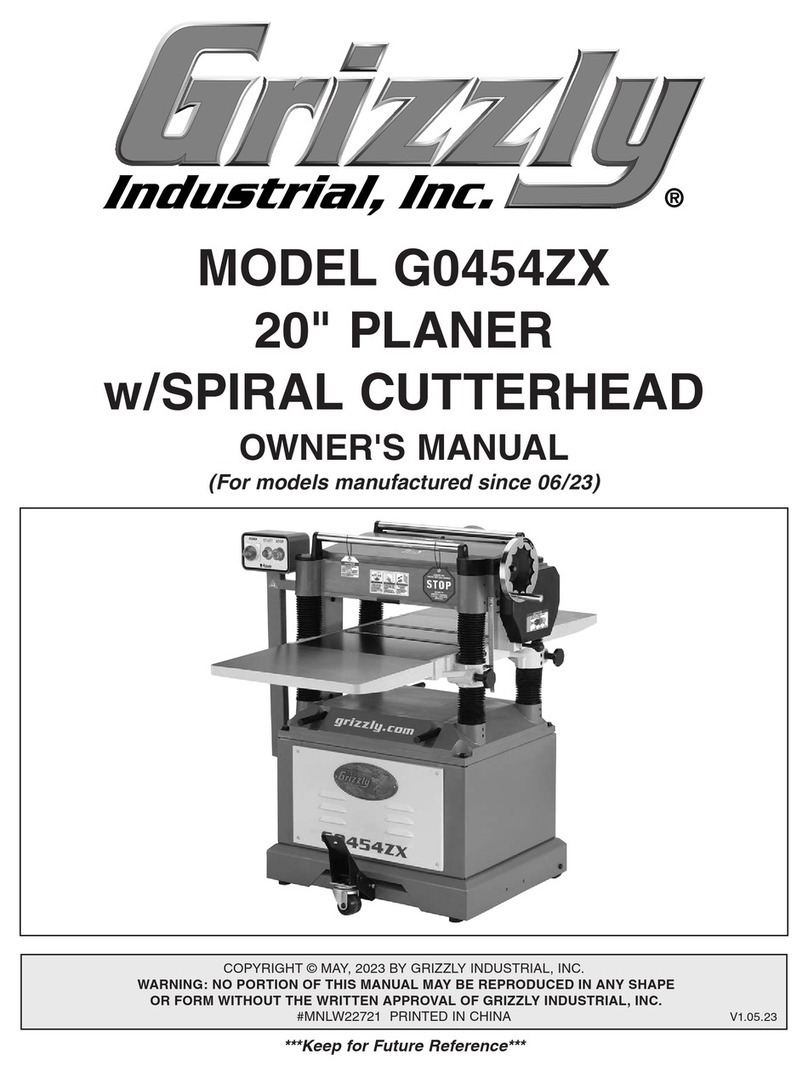
10 ENGLISH
SAFETY WARNINGS
General power tool safety warnings
WARNING Read all safety warnings, instruc-
this power tool.
Save all warnings and instruc-
tions for future reference.
Cordless Planer Safety Warnings
1. Wait for the cutter to stop before setting the
tool down.
2. Use clamps or another practical way to secure
and support the workpiece to a stable plat-
form.
to loss of control.
3. Rags, cloth, cord, string and the like should
never be left around the work area.
Avoid cutting nails. Inspect for and remove all
nails from the workpiece before operation.
5. Use only sharp blades. Handle the blades very
carefully.
6. Be sure the blade installation bolts are
securely tightened before operation.
8. Keep hands away from rotating parts.
Before using the tool on an actual workpiece,
let it run for a while. Watch for vibration or
wobbling that could indicate poor installation
or a poorly balanced blade.
10. Make sure the blade is not contacting the
workpiece before the switch is turned on.
11.
Wait until the blade attains full speed before cutting.
12.
come to a complete stop before adjusting
depth of cut.
13.
Chute may jam when cutting damp wood.
Clean out chips with a stick.
Do not leave the tool running. Operate the tool
only when hand-held.
15.
When replace the blades or some parts on the
drum, make sure to replace the parts on both
sides of the drum as a set. Otherwise, the resulting
16.
Always use the correct dust mask/respirator for the
material and application you are working with.
18. Operate the tool on stable condition. Operation
SAVE THESE INSTRUCTIONS.
WARNING: DO NOT let comfort or familiarity
with product (gained from repeated use) replace
strict adherence to safety rules for the subject
product.
MISUSE or failure to follow the safety rules stated
in this instruction manual may cause serious
personal injury.
Important safety instructions for
battery cartridge
1.
Before using battery cartridge, read all instruc-
tions and cautionary markings on (1) battery
charger, (2) battery, and (3) product using battery.
2. Do not disassemble or tamper with the battery
cartridge.
3. If operating time has become excessively
shorter, stop operating immediately. It may
result in a risk of overheating, possible burns
and even an explosion.
If electrolyte gets into your eyes, rinse them
out with clear water and seek medical atten-
tion right away. It may result in loss of your
eyesight.
5. Do not short the battery cartridge:
Do not touch the terminals with any con-
ductive material.
Avoid storing battery cartridge in a con-
tainer with other metal objects such as
nails, coins, etc.
Do not expose battery cartridge to water
or rain.
A battery short can cause a large current
breakdown.
6. Do not store and use the tool and battery car-
tridge in locations where the temperature may
reach or exceed 50 °C (122 °F).
Do not incinerate the battery cartridge even if
it is severely damaged or is completely worn
8. Do not nail, cut, crush, throw, drop the battery
cartridge, or hit against a hard object to the
battery cartridge.
Do not use a damaged battery.
10.
The contained lithium-ion batteries are subject to
the Dangerous Goods Legislation requirements.
forwarding agents, special requirement on pack-
-
national regulations.
around in the packaging.
11. When disposing the battery cartridge, remove
it from the tool and dispose of it in a safe
place. Follow your local regulations relating to
disposal of battery.
